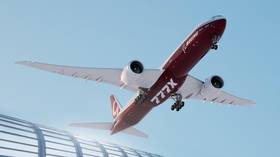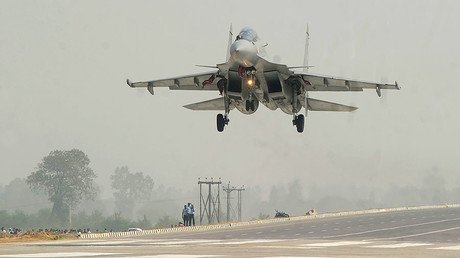Boeing to replace ‘costly’ physical jet certification tests with simulations?

Boeing is reportedly considering phasing out some old-school physical tests and relying more on digital simulation analysis in order to “streamline” the flight safety certification of its latest long-range 777X and future jets.
At the height of the scandal surrounding two fatal 737 MAX crashes – and just as the company CEO admitted they had made a “mistake” by not properly informing both customers and regulators about the known issue – Reuters has learned that Boeing is seeking to cut hours of airborne 777X tests during the year-long flight trials. Instead, the aerospace company plans to conduct more computerized stress simulations to present to the Federal Aviation Administration (FAA) for flight safety certification.
Also on rt.com ‘We fell short’: Boeing finally admits safety flaws in implementing 737 MAX softwareThe release date of the Boeing’s wide-body, twin-engine, long-range 777X jet has repeatedly been postponed due to technical and certification issues, particularly with its composite wings and engines, but the company remains hopeful it can be rolled out for commercial use in June 2020.
In the future designs, Boeing hopes that switching to computerized stress simulations, for instance on wings and fuselage, will save costs by reducing labor-intensive physical safety tests, the agency learned from FAA and industry sources. Lobbying for this more limited direct FAA oversight is part of company’s ambitious effort to “streamline” the certification process.
The company’s ultimate goal is to expand so-called “certification by analysis” using computer modeling as extensively as they possibly can, one source said, noting however that such transformation is only at a “conceptual phase” at the moment.
Boeing declined to comment on the report, only noting that it is “looking holistically” at “design and certification processes” in light of two 737 MAX crashes in Ethiopia and Indonesia, which killed 346 people.
Also on rt.com Boeing cancels 777X launch event after Ethiopian Airlines’ MAX 8 crashCurrently, the FAA accepts both physical and computer-modeling tests for safety compliance certification. When asked if Boeing would be allowed to eliminate a wider range of physical tests, the agency's spokesperson Lynn Lunsford said that the FAA “makes determinations on a case-by-case basis, relying on data and decades of experience in certifying aircraft.”
The watchdog, however, is itself under increased scrutiny and has been facing accusations that it failed to properly oversee checks on the flight-control system of the 737 MAX, the catastrophic malfunctions of which are blamed for the fatal crashes.
Also on rt.com Boeing delayed fix of faulty 737 MAX alert until 2020, informed FAA only after 1st fatal crashLike this story? Share it with a friend!












